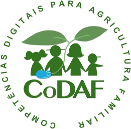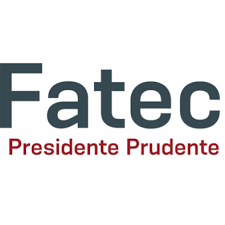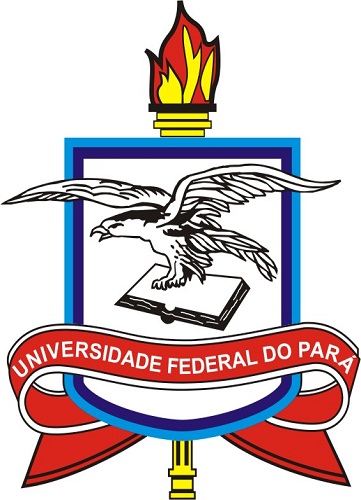e-CoDAF - Digital Skills for Family Farmers Meeting
The E-CoDAF - Digital Skills for Family Farming Meeting is promoted by the CoDAF - Digital Skills for Family Farming Meeting project. The meeting takes place annually, focusing on the presentation of reflections on proposals for the application and use of Information and Communication Technologies by the rural sector, especially for producers and interested in Family Farming, and has the collaboration of higher education institutions, which increases its visibility and the achievement of results. The papers presented at the event are available in the Proceedings.
VI e-CoDAF - Digital Skills for Family Farmers Meeting
Approaching the smallholder to accessing and using data: building bridges between their needs and ICT
The VI e-CoDAF - 6th Digital Skills Conference for Family Agriculture presents this year the theme: Approaching the smallholder to accessing and using data: building bridges between their needs and ICT. VI e-CoDAF is promoted by the CoDAF project - Digital Competences for Family Agriculture and focuses on the presentation of reflections on proposals for the development and use of Information and Communication Technologies by the rural sector, especially for small producers. In this edition, it will count on the collaboration of three higher education institutions (UNESP/Tupã, FATEC/Presidente Prudente, UFPA/Belém), which increases its visibility and results reach.
ISBN: 978-85-67703-06-0
¿Las Fotografías aéreas permiten la deteccíon temprana de pudricíon del cogollo en palma de aceite?
Authors
Victor O. Rincón-Romero
CENIPALMA/Colômbia | vrincon@cenipalma.org. | https://orcid.org/0000-0002-7273-9491 |
Universidad Autónoma de Manizales, Maestría en Desarrollo Regional y Planificación del Territorio, Maestría en Sistemas de Información Geográfica, Ingeniero Catastral y Geodesia.
Freddy Rafael Camperos-Reyes
SENA – Norte de Santander/Colômbia | freddy_cre@hotmail.com | https://orcid.org/0000-0002-3258-5256 |
Master en Gestión de la Información y Tecnologías Geoespaciales por la Universidad Sergio Arboleda, Ingeniero Electrónico por la Universidad Francisco de Paula Santander (UFPS).
María Anaya Anaya M
SENA – Norte de Santander/Colômbia | manayam@sena.edu.co | https://orcid.org/0000-0003-4065-9291 |
Especialista en Gerencia de Proyectos por la Corporación El Minuto de Dios, Ingeniera Agronoma por la Universidad Francisco de Paula Santander (UFPS).
María Angélica Martínez Ascanio
SENA – Norte de Santander/Colômbia | mamartinez61@misena.edu.co | https://orcid.org/0000-0002-6269-8913 |
Tecnologa en Análisis y Desarrollo de Sistemas de Información por el Servicio Nacional de Aprendizaje (SENA).
Greicy Andrea Sarria Villa
CENIPALMA/Colômbia | gsarria@cenipalma.org | https://orcid.org/0000-0002-3198-3594 |
Master en Ciencias Agrarias por la Universidad de São Paulo.
Yuri Adriana Mestizo Garzón
CENIPALMA/Colômbia | ymestizo@cenipalma.org | https://orcid.org/0000-0001-9139-7872 |
Ingeniería Agronómica por la Universidad de Cundinamarca.
Jorge Luis Torres León
CENIPALMA/Colômbia | jltorres@cenipalma.org | https://orcid.org/0000-0002-4735-1516 |
Master in Geo-information Science and Earth Observation of Twente University ff Technology
Abstract (Portuguese)
Una de las enfermedades de mayor impacto en el cultivo de la palma de aceite es la Pudrición del Cogollo (PC) causada por Phytophthora palmivora, cuyo principal manejo se basa en la detección por medio de inspección visual de la afectación en las hojas más jóvenes, con el fin de retirar los tejidos afectados y detener el avance de la enfermedad. El método de detección demanda un alto nivel de experticia y se dificulta en la medida en que la altura de la palma aumenta la distancia entre el observador y la hoja. Se han publicado trabajos que han evaluado el uso de fotografías aéreas para detección de la enfermedad, sin embargo, dichos trabajos han logrado discriminar estados avanzados de la enfermedad en los cuales el manejo recomendado es la eliminación de la planta. Por tanto, en el presente trabajo se tuvo como objetivo determinar la capacidad de identificación de palmas con PC en estados tempranos a partir de imágenes aéreas de alta resolución espacial. Se realizó la toma de imágenes a 43 palmas enfermas y 55 palmas sanas, en plantaciones localizadas en la Zona Central palmera de Colombia, teniendo en cuenta la alta incidencia de la enfermedad en esa localización. Para la toma de imágenes se utilizó un multi-cóptero DJI Matrice 100 al cual se le adaptó una cámara multiespectral Tetracam Micro ADC. A partir de las imágenes se calcularon 8 índices de vegetación a palmas sanas y enfermas. El análisis de la variabilidad de los datos y una prueba de diferencia de medias no pareadas llevó a concluir que el uso de índices de vegetación multiespectrales obtenidos a partir de fotografías aéreas de alta resolución espacial, en las condiciones de este estudio, no permiten realizar una discriminación de palmas enfermas con PC en estados tempranos de la enfermedad.
Palavras-chave: Palma de aceite. Fotografías aéreas. Indices de vegetación. Teledetección. Agricultura de precisión.
Abstract
One of the diseases with the greatest impact on the oil palm is the bud rot (PC) caused by Phytophthora palmivora, whose main management is based on the detection by means of visual inspection of the affectation in the younger leaves, in order to remove the affected tissues and stop the progression of the disease. The detection method demands a high level of expertise and is difficult to the extent that the height of the palm increases the distance between the observer and the leaf. There have been published works that have evaluated the use of aerial photographs for detection of the disease, however, these works have managed to discriminate advanced stages of the disease in which the recommended management is the elimination of the plant. Therefore, in this work we aimed to determine the capacity of identification of palms with PC in early stages from aerial images of high spatial resolution. The imaging of 43 diseased palms and 55 healthy palms was carried out in plantations located in the Central Palm Zone of Colombia, taking into account the high incidence of the disease in that location. For the taking of images, a multi-copter DJI Matrice 100 was used, to which a Tetracam Micro ADC multispectral camera was adapted. From the images 8 vegetation indexes were calculated to healthy and diseased palms. The analysis of the variability of the data and a test of difference of unpaired means led us to conclude that the use of multispectral vegetation indices obtained from aerial photographs of high spatial resolution, under the conditions of this study, do not allow us to perform a discrimination of diseased palms with PC in early stages of the disease.
Keywords: Oil palm. Aerial photographs. Vegetation indices. Remote sensing. Precision agriculture.




